Written By:
Kayley Blanchard
Email marketing is one of the most effective marketing channels today and boasts one of the highest ROIs in the industry. However, to find success in email marketing and meet your goals, you need to identify and monitor the appropriate email marketing KPIs.
In this article, we take a look at:
-
What KPIs are and why they’re important
-
The best email marketing KPIs and how to calculate them
-
How to track and monitor your KPIs
With 99% of consumers checking their email every day, there’s no denying that email marketing is one of the most effective ways to reach your target audience. By supplementing your inbound marketing strategy with email campaigns, you’ll meet your marketing goals in no time at all.
But how do you know when you’ve met your marketing goals? How will you measure the effectiveness of email marketing for your organization?
This is where KPIs, or Key Performance Indicators, come into play. Before setting any goals for your email marketing campaign you’ll need to choose the appropriate performance metrics (KPIs) to measure.
Today, we’ll take a look at the best email marketing KPIs to measure, but first, let’s dig a little deeper into what KPIs are and how they relate to your marketing goals.
What are KPIs and why are they important?
KPI stands for Key Performance Indicator.
Simply put, KPIs are quantifiable metrics that gauge your performance against your goals. They are Key as they represent the most important metrics that you have decided to improve in order to meet your goals. KPIs also measure your Performance against your goals and Indicate whether or not you’ve been successful in achieving them.
As a reminder, all of your marketing goals should be SMART goals, meaning that they are Specific, Measurable, Attainable, Relevant, and Time-bound. When you set your SMART email marketing goals, you’ll find that KPIs are an important piece of the puzzle.
KPIs are a critical part of the SMART framework (specific, measurable, attainable, relevant, time-bound). They tackle the measurable piece of the acronym by providing you with quantifiable measurements to base your goals on. Without them, you won’t know what you’re trying to achieve and you’ll have no way to measure your progress.
Download the S.M.A.R.T. Marketing Goals Template
An easy-to-use, free spreadsheet template with step-by-step instructions.

The specific email marketing metrics that you choose might differ a bit depending on your organization’s unique objectives and priorities, but there are certain email marketing KPIs that every marketer should consider.
The Best Email Marketing KPIs to Track for Your Campaign
1. Bounce Rate
First and foremost, you need to know whether your emails are actually making it to your subscribers’ inboxes. Bounce Rate is the percentage of email addresses that failed to receive your email.
To break this down further, there are two types of bounce errors that can occur: hard bounces and soft bounces.
A hard bounce is caused by a permanent error like a nonexistent email address whereas a soft bounce is caused by a temporary error like a server issue or full inbox.
Aim for a bounce rate of no more than 2% to ensure that your emails are deliverable and your email marketing efforts are worthwhile.
How to calculate Bounce Rate
To calculate your Bounce Rate, divide the number of bounces by the total number of emails sent and multiply by 100.
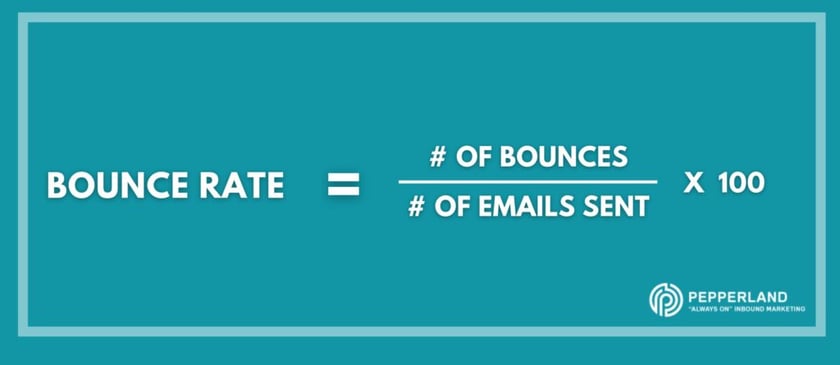
2. Open Rate
Your Open Rate refers to the number of times your emails were opened compared to the total number sent.
Open Rate is arguably one of the most important KPIs that you can track for your email marketing campaigns since it’s indicative of how interested your subscribers are in your company and what you have to offer.
High open rates are strongly correlated with well-optimized, attention-grabbing subject lines and preview text. If you notice a decline in your Open Rate, you might want to adjust either of the two.
You’ll want to aim for an Open Rate of at least 20 percent.
How to calculate Open Rate:
To calculate your Open Rate, divide the number of email opens by the total number of emails sent and multiply by 100.
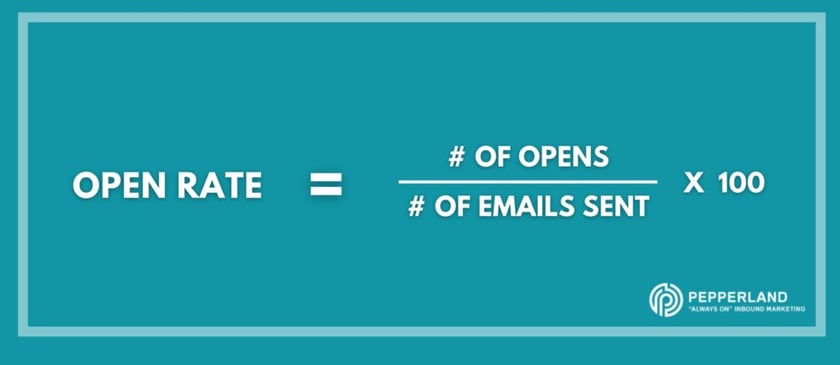
3. Opens by Device
It’s not enough just to know your overall Open Rate; throughout your marketing campaign, you should also look at where your emails are being opened.
Opens by Device tells you the number of times your email was opened broken down by device type. You’ll be able to determine whether your subscribers open your emails via desktop or mobile. From there, you can optimize the design of your emails and the placement of your CTAs for each device type.
How to calculate Opens by Device:
Utilize email marketing software like HubSpot and take a look at your analytics reports to identify how many times your emails were opened on different devices.
4. Click-through Rate (CTR)
Click-through Rate, or CTR, is a measure of how many users have clicked on the links within your email after opening.
It’s great if your emails are being opened but if that’s all that’s happening, then your marketing efforts are falling short. You’re sending these emails with the intent that your subscribers will take the desired action, which is typically clicking on a CTA or offer within the email and ultimately converting.
Try to keep your CTR above 4 percent.
If you notice that you have a killer email Open Rate but your CTR is slim to none, then you should zero-in on the design of your emails and CTAs. Try using different wording or adjusting the layout of your emails to increase the likelihood that your subscribers will click the links that you want them to.
How to calculate Click-through Rate (CTR):
To calculate your email CTR, divide the number of email opens by the total number of emails sent and multiply by 100.
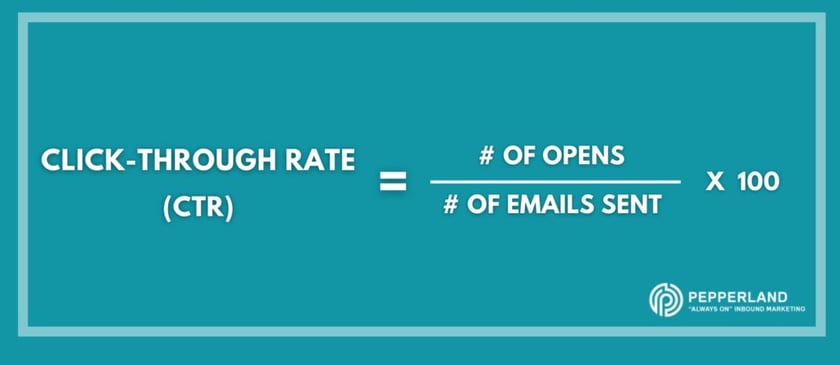
5. Conversion Rate
While Click-through Rate is a good indicator of whether your subscribers are interested in your content and engaging with your emails, your Conversion Rate tells you even more.
Your email Conversion Rate measures how many subscribers both clicked on a link in your email and took the desired action (ex: made a purchase, submitted a form, etc.).
If users are clicking links within your email but not converting, there may be inefficiencies within your email marketing funnel. Perhaps your CTA is misleading or your subscribers don’t find your offer to be as valuable as they had hoped.
Your ideal Conversion Rate depends on both the type of email and your industry.
How to calculate Email Conversion Rate:
To calculate the conversion rate of your email campaign, divide the number of times the desired action was taken by the total number of emails delivered, and multiply that number by 100.
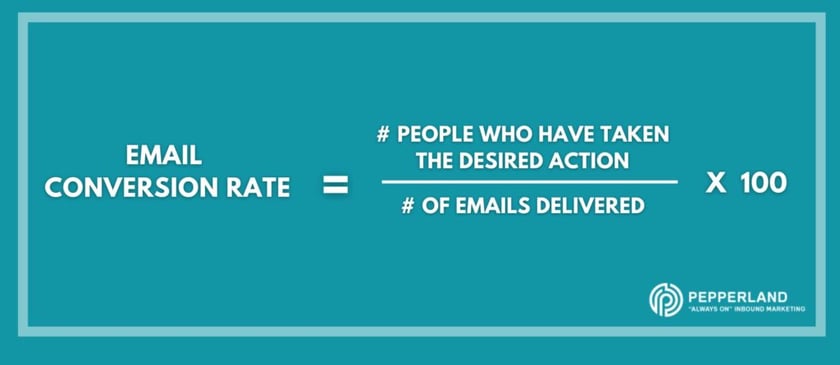
6. Unsubscribe Rate
Your Unsubscribe Rate takes a look at how many contacts have opted-out of receiving your emails in the future.
This metric provides you with valuable insight into both your contact list as well as the content of your emails. You might be sending emails too frequently or your content isn’t providing your subscribers the value that you had anticipated.
Of course, the lower your Unscribe Rate the better. Aim for no more than 2 percent.
How to calculate Unsubscribe Rate:
To calculate your unsubscribe list, divide the number of unsubscribes by the total number of emails delivered and multiply by 100.
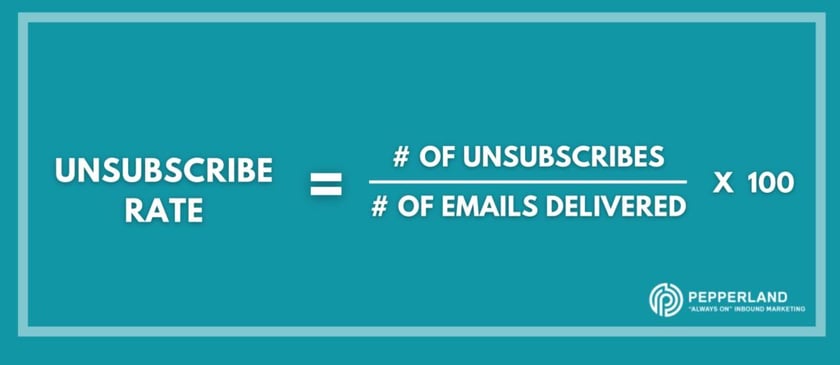
7. List Growth Rate
The opposite of your Unsubscribe Rate is your List Growth Rate.
Your List Growth Rate tracks the rate at which your subscriber list is growing. If your list is growing, you’re successfully gaining more subscribers than you are losing.
If your List Growth Rate remains stagnant or is decreasing, focus on ways to gain new quality subscribers and keep them engaged.
How to calculate your List Growth Rate:
To calculate your List Growth Rate, first, divide the number of new subscribers by the number of unsubscribes then divide that number by the total number of email addresses in your list. Then, multiply by 100 to convert this to percentage.
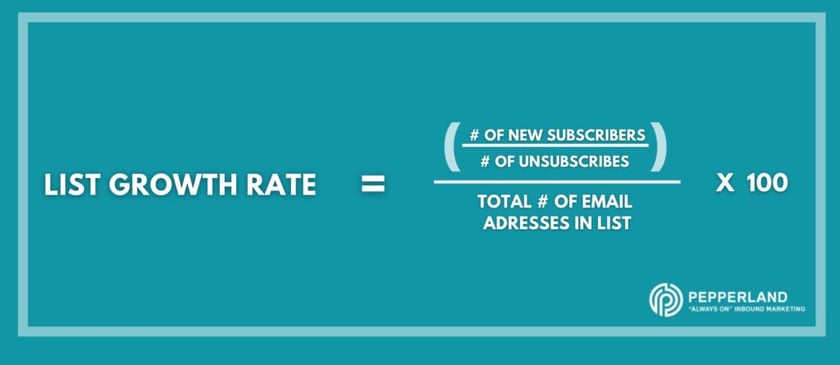
8. Email ROI
Your Return on Investment, or ROI, is a measure of how much revenue you’ve generated through your email marketing campaign in comparison to how much you’ve spent. ROI tells you whether your email marketing efforts are profitable for your organization.
Currently, email marketing has one of the highest ROIs in the industry, averaging a return of $44 for every $1 spent.
If you’re unhappy with your ROI, you might need to reconsider your current email strategy.
How to calculate your Email ROI:
To calculate the ROI of your email marketing campaign, first, subtract any campaign costs from the revenue your campaign generated. Then, divide this number by your campaign costs and multiply by 100.
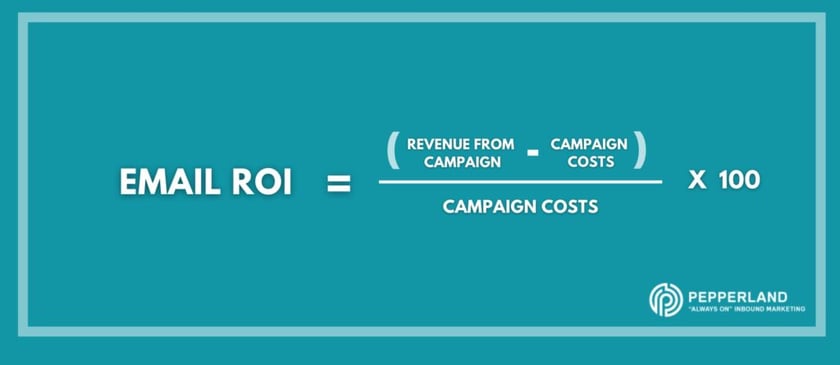
9. Revenue Per Subscriber
This metric is pretty self-explanatory; it represents the revenue that you generate from each of your subscribers.
This is an important metric as you’re able to identify how valuable your current subscribers are to your organization.
How to calculate Revenue Per Subscriber:
To calculate Revenue Per Subscriber, simply divide your total email revenue by your total number of subscribers.
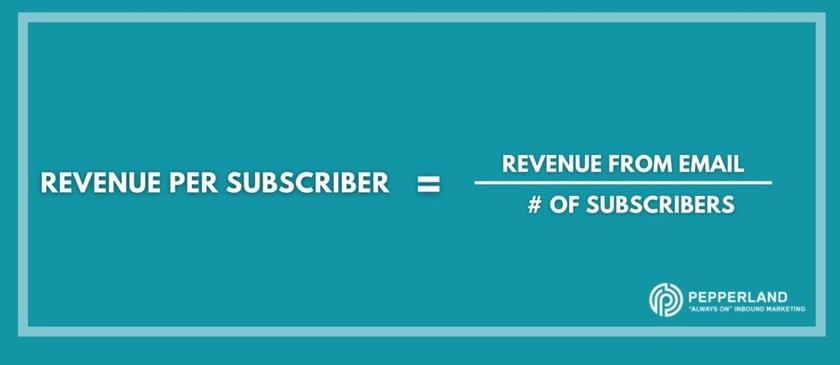
10. Revenue Per Email
In addition to Revenue Per Subscriber, you’ll also want to know the revenue that each individual email generates. This is referred to as Revenue Per Email.
This KPI gives you valuable insight into the types of marketing emails that are the most successful for your organization. Try to identify any trends or common characteristics of your most profitable email campaigns.
How to calculate Revenue Per Email:
To calculate Revenue Per Email, divide your total email revenue by the total number of emails delivered.
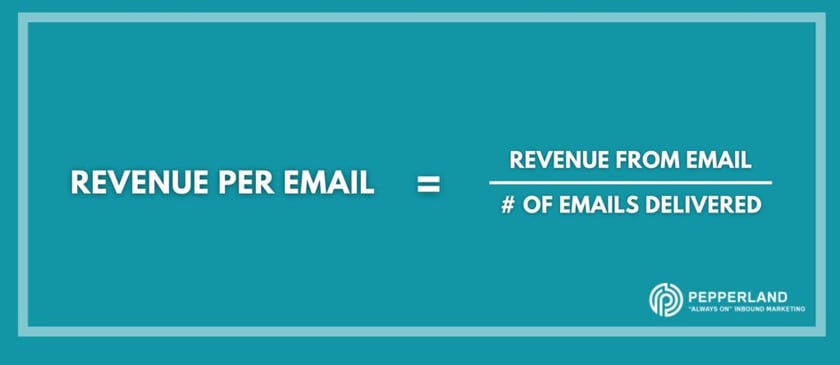
Driving Results with KPIs
These are just a few of the many email marketing KPIs that exist. Choose the metrics that make the most sense for your organization and use them to develop SMART goals for your strategy.
To track your progress toward your goals and monitor any changes in your KPIs, we recommend that you use an email marketing software like HubSpot and integrate it with a tool like Databox in order to automatically track your performance with a customizable dashboard.
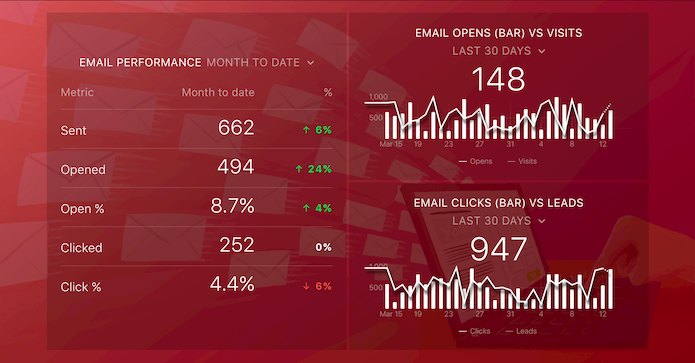
By identifying the appropriate KPIs for your email marketing goals and consistently monitoring your progress, your efforts are more likely to be successful and profitable for your organization.
Download our free SMART marketing goal-setting template to set your email marketing goals with the KPIs you’ve selected.







